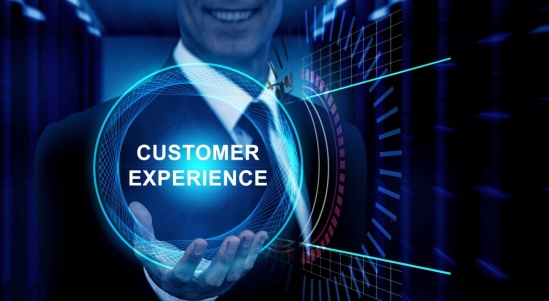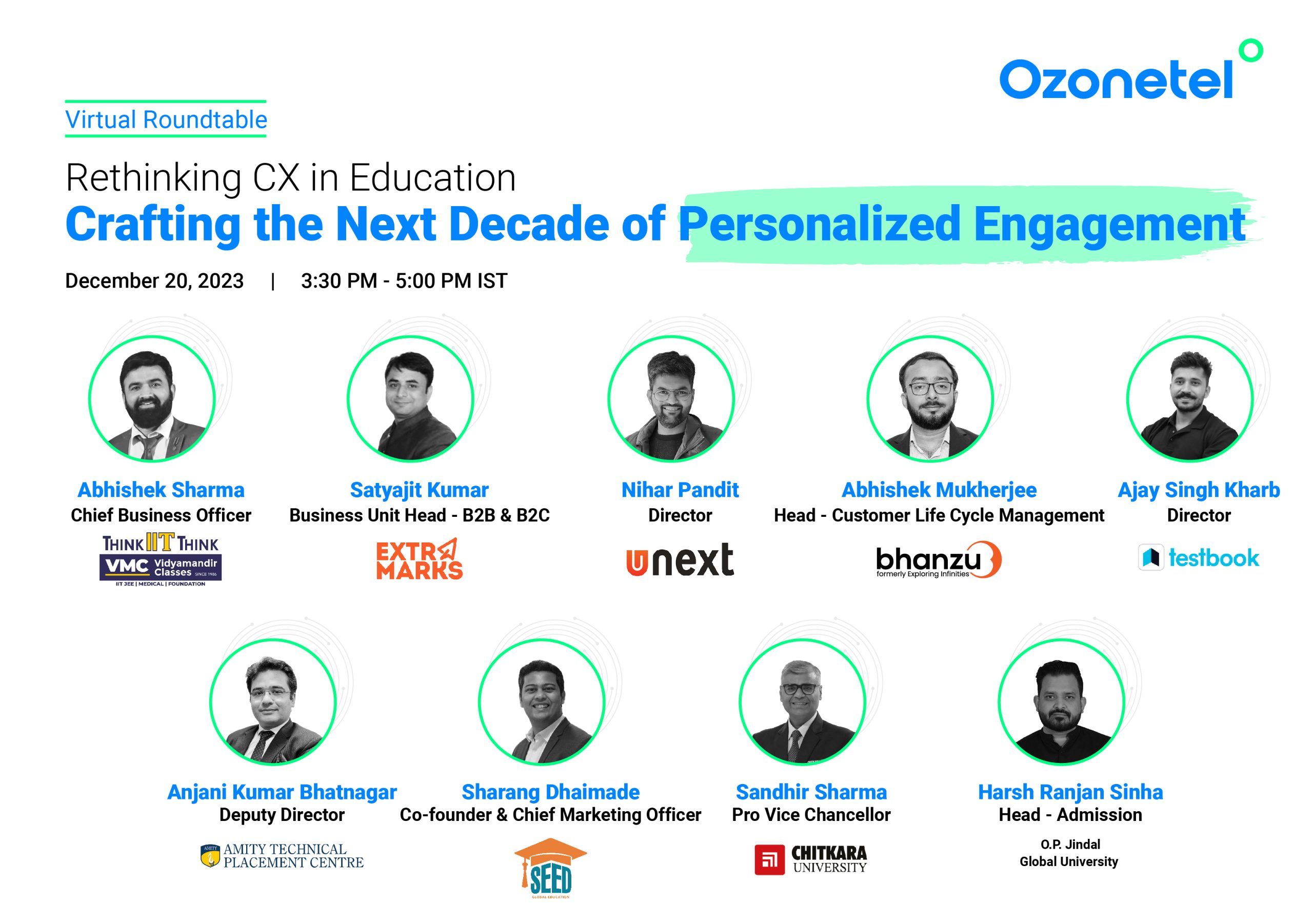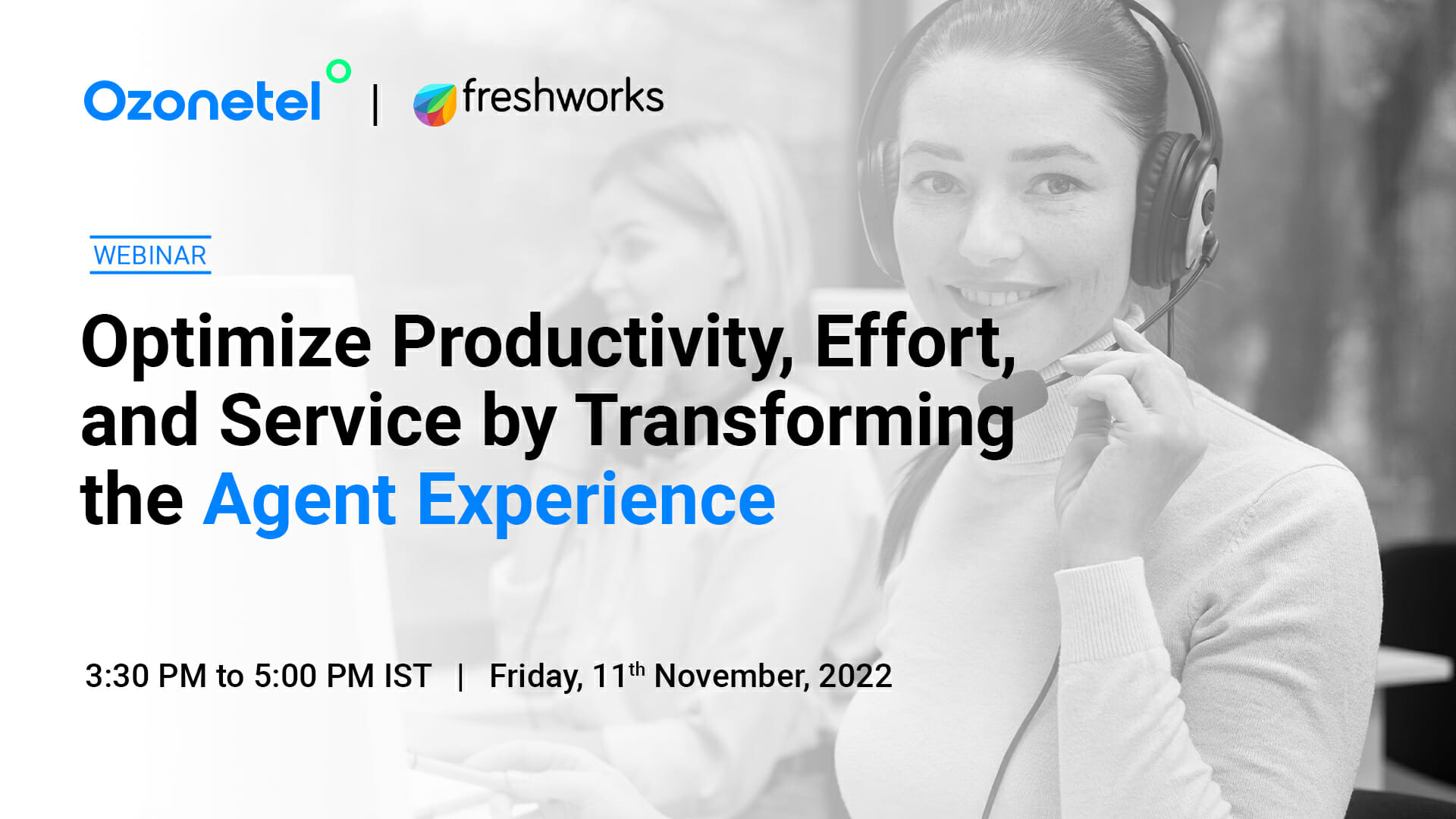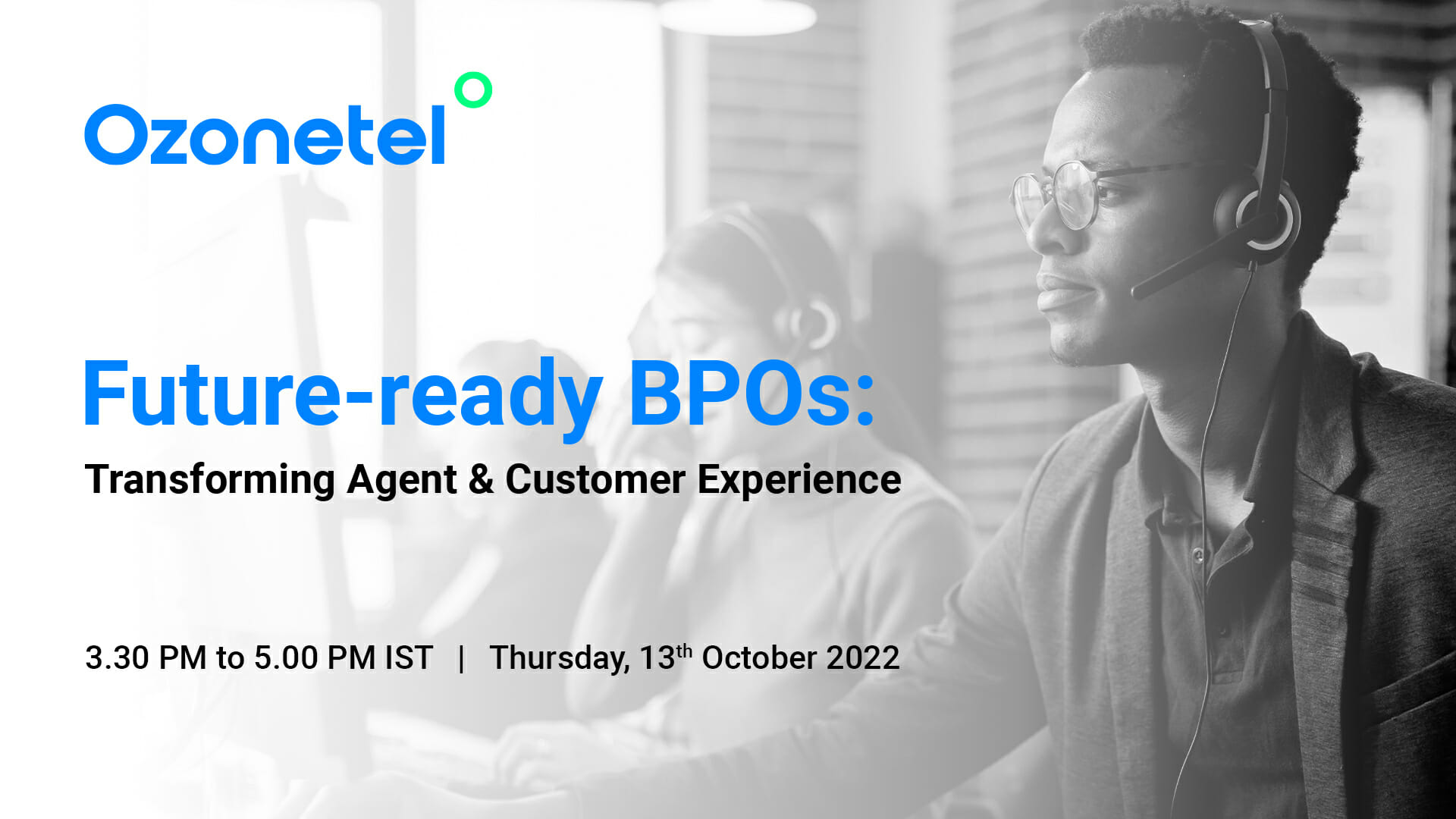- Resources
- Customer-First Approach: Definition, Benefits & How to Build It
Customer-First Approach: Definition, Benefits & How to Build It

A customer-first culture means prioritizing customer needs at every level of your business—from product development to support interactions. It’s not about blindly following customer demands but about creating genuine, long-term value for them while balancing business goals.
However, a customer-first culture doesn’t happen overnight. It requires strategic shifts in mindset, processes, and employee engagement. In this article, we go into more detail about the key strategies to build and sustain a truly customer-first organization. Read along!
In this article, we will explore:
- 1.What Does Customer First Mean?
- 2. What is the Customer-First Approach?
- 3.Why is it Important to Put Your Customer First?
- 4.Benefits of Following Customer First Approach
- 5.Simple Steps to Create a Customer-First Approach
- 6.Examples of Companies Putting Customer First
- 7.Checklist to Understand if Your Company Is Customer-First or Not
- 8.Customer Is Always Right vs. Customer The First Approach
What Is Customer Obsession?
Customer obsession is about placing your customers at the core of every decision you make. It goes beyond simply satisfying their needs—it’s about actively working to improve their experience at every touchpoint, anticipating what they want, and addressing their concerns before they even raise them.
What Does Customer First Mean?
A customer-first approach means you put customers at the center of every business decision. Instead of just focusing on products or services, you prioritize their needs, preferences, and expectations at every stage. This mindset helps build trust, loyalty, and long-term relationships with your customers.
What is the Customer-First Approach?
A customer-first approach means prioritizing customer needs in every decision, from product development to marketing and customer service. Instead of just reacting to issues, you proactively understand what customers want and create solutions that improve their overall experience.
The key elements of a customer-first strategy are:
- Understanding Customer Needs Proactively: Instead of waiting for complaints, you actively gather insights through surveys, social media, reviews, and direct conversations. This helps you identify pain points and improve your products and services before problems arise.
- Making Business Decisions Based on Customer Impact: Every department—product, sales, marketing, and support—should consider how their decisions affect the customer. Whether it’s pricing, new features, or policies, the goal is to improve customer satisfaction rather than just maximizing short-term sales.
- Creating a Seamless Customer Experience: A customer-first strategy focuses on every touchpoint in the customer journey. From the first interaction to post-purchase support, your processes should be simple, intuitive, and customer-friendly.
- Building Long-Term Customer Relationships: Instead of focusing only on acquiring new customers, a customer-first business values retention. Offering personalized experiences, reliable support, and loyalty programs encourages repeat business and strengthens trust.
- Acting on Customer Feedback: Listening to customers is not enough; you need to take action. Businesses that implement changes based on customer feedback gain credibility and loyalty. Companies like Apple and Amazon lead in this area by consistently improving their products and services based on customer input.
Why is it Important to Put Your Customer First?
Satisfied customers are more likely to make repeat purchases, leave positive reviews, and recommend your business to others. In fact, studies show that improving customer service interactions can increase revenue and shareholder returns, making customer satisfaction a key factor that drives long-term success.
However, a customer-first strategy doesn’t just benefit customers but also employees. A workplace that values customer satisfaction tends to have a more positive work environment, reducing conflicts between staff and customers.
When your team is engaged and motivated, they deliver better service, creating a cycle of continuous improvement for your business.
Benefits of Following Customer First Approach
When you prioritize customer needs, you create a positive experience that encourages loyalty, repeat purchases, and word-of-mouth recommendations. Here are some key benefits of adopting a customer-first strategy:
Increases Customer Retention
Customers who have a positive experience with your brand are more likely to return for future purchases. When you focus on delivering quality service, addressing concerns, and offering value beyond just the product, customers build trust in your brand. This reduces customer churn (the rate at which customers stop doing business with you) and strengthens long-term relationships.
Boosts Profitability
Happy customers tend to spend more. If they trust your brand and feel valued, they are more likely to add more items to their cart, purchase higher-value products, or subscribe to services. Studies show that improving customer interactions can increase revenue and shareholder returns, making customer satisfaction a key factor in business growth.
Improves Brand Reputation
Customers share their experiences through online reviews, social media, and personal recommendations. A customer-first strategy encourages positive feedback, which strengthens your brand’s reputation and attracts new customers. On the other hand, poor service can lead to negative reviews, which can impact sales and trust.
Gives You a Competitive Advantage
A business that prioritizes customer needs stands out in the market. Personalized service, quick issue resolution, and consistent engagement make your brand more appealing than competitors that don’t focus on customer experience. This differentiation helps you attract and retain more customers in a crowded marketplace.
Encourages Customer Advocacy
Loyal customers become your brand advocates. They not only return for repeat purchases but also recommend your business to friends, family, and colleagues. Word-of-mouth marketing is one of the most powerful ways to gain new customers, and a strong customer-first approach naturally encourages it.
Creates a Positive Work Environment
When employees work in a customer-focused culture, they are more engaged and motivated. A workplace that values customer satisfaction often results in fewer conflicts and a more positive atmosphere. Employees who see the impact of their work on customer happiness tend to find their jobs more meaningful, leading to higher job satisfaction and retention.
Simple Steps to Create a Customer-First Approach
A customer-first approach means prioritizing customer needs while maintaining a balance between business objectives and employee well-being. But how can you implement this approach in your organization? Here are some steps:
1. Build a Customer-Centric Culture
- Train every department—not just customer support—to think from the customer’s perspective.
- Encourage employees to take ownership of customer issues instead of passing them along.
- Recognize and reward employees who go the extra mile to improve customer experience.
Actionable Tip: Conduct real-world scenario training where employees learn how to handle different types of customer concerns effectively.
2. Prioritize Clear and Proactive Communication
- Make it easy for customers to contact you through multiple channels (email, phone, chat, social media).
- Set response time expectations so customers know when they’ll hear back from you.
- Be proactive—inform customers about delays, product issues, or changes before they have to ask.
Actionable Tip: Use automated responses for common queries, but always have a human representative follow up for complex issues.
3. Personalize Customer Interactions
- Use customer data (purchase history, preferences, feedback) to offer relevant recommendations.
- Address customers by name and acknowledge their history with your business.
- Avoid one-size-fits-all responses—customize solutions based on individual needs.
Actionable Tip: Implement a Customer Relationship Management (CRM) system to track and use customer information effectively.
4. Empower Employees to Make Decisions
- Give frontline staff the authority to resolve common issues without waiting for manager approval.
- Set clear guidelines on what employees can offer (discounts, refunds, alternative solutions).
- Encourage problem-solving instead of rigidly following scripts.
Actionable Tip: Create a decision matrix outlining different scenarios and the best course of action employees can take.
5. Collect and Act on Customer Feedback
- Regularly gather feedback through surveys, reviews, and direct conversations.
- Identify patterns in complaints and make improvements based on real customer issues.
- Show customers that their feedback matters by communicating changes based on their input.
Actionable Tip: Set up a customer feedback loop, where feedback is collected, analyzed, and acted upon with regular updates to customers.
6. Balance Customer Satisfaction with Business Sustainability
- Offer solutions that are fair to both the customer and the company.
- Avoid making unrealistic promises just to please customers in the short term.
- Support employees when dealing with unreasonable customer demands.
Actionable Tip: Set clear service policies and communicate them transparently to customers from the start.
7. Measure and Improve Customer Experience
- Track key customer experience metrics like Customer Satisfaction Score (CSAT), Net Promoter Score (NPS), and Customer Effort Score (CES) to understand customer perception.
- Identify gaps in service and continuously refine processes.
- Train employees regularly to improve customer interactions based on performance data.
Actionable Tip: Conduct mystery shopping exercises, where employees experience the service from a customer’s perspective to find areas for improvement.
Examples of Companies Putting Customer First
Now, let’s look at some brands that have mastered a customer-first approach by building seamless experiences, empowering employees, and leveraging technology to make customers feel valued.
Amazon
Amazon puts customers first by making shopping fast, easy, and personalized. From one-day shipping with Prime to hassle-free returns, every service is designed for convenience. Its recommendation engine analyzes past purchases and browsing history to suggest products before customers even search for them. Quick issue resolution and a customer-centric return policy further build trust.
Netflix
Netflix tailors content recommendations based on viewing habits, preferences, and global trends. More than 80% of content watched comes from these AI-driven suggestions, ensuring customers always find something they like. By continuously improving its recommendation engine, Netflix keeps engagement high and reduces churn.
Apple
Apple integrates hardware, software, and services to create a frictionless user experience. Whether it’s iCloud syncing across devices or personalized in-store support at the Genius Bar, Apple ensures customers get consistent, high-quality service. Its focus on intuitive design makes technology accessible and enjoyable.
Trader Joe’s
Trader Joe’s stands out by prioritizing in-store experience over discounts or loyalty programs. Employees go beyond standard service—from opening a product for a taste test to making shopping easier for parents with kids. The company also listens to customer feedback, adjusting store hours, packaging, and product selection accordingly.
USAA
USAA builds loyalty by treating customers like people, not numbers. With one of the highest Net Promoter Scores in banking, it continuously implements employee and customer suggestions. Its augmented reality features in mobile banking help customers understand financial decisions in real time.
Hilton
Hilton enhances the guest experience with Connected Rooms, which remember lighting, temperature, and TV preferences across visits. This small touch makes each stay feel personalized. Its high American Customer Satisfaction Index (ACSI) score reflects its commitment to seamless, customer-first service.
Zappos
Zappos puts customer service at the center of its brand by giving employees full autonomy to solve customer issues. Representatives aren’t bound by call-time limits or rigid scripts, leading to genuine, long-lasting interactions. Its no-questions-asked return policy further reinforces its commitment to customer happiness.
Checklist to Understand if Your Company Is Customer-First or Not
A customer-first company prioritizes customer needs in every decision, from product development to service interactions. If you want to evaluate whether your company truly follows a customer-first approach, go through this checklist:
- Do you actively collect and act on customer feedback?
- If Yes: You have a structured process to gather feedback and use it to improve products/services.
- If No: Introduce multiple feedback channels (surveys, reviews, social media) and analyze patterns to make meaningful improvements.
- Is your customer support responsive and solution-oriented?
- If Yes: Your team resolves issues quickly, providing clear and helpful responses.
- If No: Train support teams, set response time benchmarks, and use automation (like chatbots) to improve efficiency.
- Do customers get a consistent experience across all touchpoints (website, app, store, support, etc.)?
- If Yes: Your branding, messaging, and service levels remain uniform across all channels.
- If No: Audit customer interactions across different channels and standardize processes to maintain consistency.
- Do you prioritize long-term customer relationships over one-time sales?
- If Yes: You focus on retention strategies and meaningful engagement.
- If No: Shift from aggressive sales tactics to value-driven relationships through loyalty programs, after-sales support, and personalized follow-ups.
- Do you offer personalized recommendations and interactions?
- If Yes: You use customer data to provide relevant product suggestions and tailored experiences.
- If No: Implement customer segmentation and data analytics to deliver more relevant recommendations.
- Do employees understand the importance of a customer-first approach?
- If Yes: Your team is trained to handle customer needs efficiently and empathetically.
- If No: Invest in training programs that focus on customer service, problem-solving, and effective communication.
- Are your policies designed to make things easier for customers, not just your company?
- If Yes: Your return, refund, and service policies prioritize customer convenience.
- If No: Review policies from a customer’s perspective and simplify processes that may cause frustration.
- Do you measure customer satisfaction through key metrics like CSAT (Customer Satisfaction Score), NPS (Net Promoter Score), and retention rate?
- If Yes: You regularly track and analyze customer sentiment to improve service.
- If No: Start collecting and reviewing these metrics to identify pain points and make data-backed decisions.
- Do you resolve customer issues without unnecessary delays?
- If Yes: You have clear protocols for issue resolution, reducing friction for customers.
- If No: Streamline issue escalation processes and empower support teams to make quick decisions.
- Do you recognize and reward loyal customers?
- If Yes: You offer exclusive perks, discounts, or benefits to repeat customers.
- If No: Introduce loyalty programs or personalized discounts to show appreciation for long-term customers.
Customer Is Always Right vs. Customer The First Approach
Many businesses confuse “customer is always right” with “customer-first,” but the two are not the same. While both prioritize customer satisfaction, they differ in execution and long-term impact.
The “customer is always right” phrase suggests that a business should always side with the customer, even when their claims are unreasonable. The idea behind it is to ensure customer satisfaction at any cost, even if it means:
- Overriding company policies to accommodate demands.
- Accepting customer complaints without verification.
- Placing customer satisfaction above employee well-being.
So, how does it differ from the customer-first approach? Here are some points
| Aspect | “Customer Is Always Right” | Customer-First Approach |
|---|---|---|
| Definition | Always side with the customer, even if their claims are unreasonable | Put the customer’s needs at the center of decision-making while balancing fairness |
| Policy Handling | Overrides company policies to meet customer demands | Respects policies while offering thoughtful solutions to customer issues |
| Complaint Verification | Accepts complaints without verification | Listens carefully but verifies facts before acting |
| Employee Well-being | Often sacrifices employee morale to please customers | Balances customer satisfaction with employee support |
| Long-Term Impact | Can lead to entitlement and unreasonable expectations | Builds trust and loyalty through fairness and respect |
| Business Culture | Customer above all, even at a cost | Customer-centric, but with healthy boundaries |
A customer-first approach creates a more balanced and sustainable business model. Instead of bending to every customer demand, focus on fair, transparent, and proactive service that benefits both your customers and employees.
Conclusion: How Ozonetel Can Help
Building a customer-first culture requires the right tools to support seamless communication, real-time insights, and personalized interactions. Ozonetel’s cloud communication solutions help businesses streamline customer interactions, improve response times, and enhance overall customer satisfaction.
With features like:
- Omnichannel communication to connect with customers across voice, chat, email, and social platforms.
- AI-driven analytics to track customer sentiment and improve service quality.
- Intelligent call routing to reduce wait times and connect customers with the right agents faster.
- Automated follow-ups and self-service options to ensure customer concerns are addressed promptly.
Frequently Asked Questions
Adopting a customer-first approach requires structural and cultural shifts within a company. Some common challenges include:
- Siloed Departments: Lack of coordination between sales, support, and product teams can lead to inconsistent customer experiences.
- Slow Response Time: If customer queries are not addressed quickly, satisfaction drops.
- Inflexible Policies: Rigid return, refund, or service policies may frustrate customers.
- Lack of Personalization: Treating all customers the same can reduce engagement.
- Measuring Customer Sentiment: Many businesses don’t track customer satisfaction effectively.
To assess how well your company prioritizes customers, track these key metrics:
- Net Promoter Score (NPS): Measures how likely customers are to recommend your business.
- Customer Satisfaction Score (CSAT): Captures immediate satisfaction levels after interactions.
- Customer Retention Rate: Indicates how well you keep existing customers.
- Customer Churn Rate: Tracks the percentage of customers who stop using your services.
- First Response Time (FRT): Measures how quickly customer queries are addressed.
- Customer Lifetime Value (CLV): Shows the total revenue a business can expect from a single customer over time.
Ozonetel is reshaping customer experience by integrating cloud-based communication solutions that offer features such as:
- Omnichannel Support: Unifying voice, chat, email, and social media interactions for seamless customer service.
- AI-Powered Analytics: Using AI to track customer sentiment and predict behavior for proactive service.
- Automation & IVR (Interactive Voice Response): Reducing wait times and improving first-call resolution with intelligent call routing.
- Remote & Hybrid Support Solutions: Allowing customer service teams to operate efficiently from anywhere.
Related resources
Filter by Tags
- Resources
- Customer-First Approach: Definition, Benefits & How to Build It
Customer-First Approach: Definition, Benefits & How to Build It

A customer-first culture means prioritizing customer needs at every level of your business—from product development to support interactions. It’s not about blindly following customer demands but about creating genuine, long-term value for them while balancing business goals.
However, a customer-first culture doesn’t happen overnight. It requires strategic shifts in mindset, processes, and employee engagement. In this article, we go into more detail about the key strategies to build and sustain a truly customer-first organization. Read along!
In this article, we will explore:
- 1.What Does Customer First Mean?
- 2. What is the Customer-First Approach?
- 3.Why is it Important to Put Your Customer First?
- 4.Benefits of Following Customer First Approach
- 5.Simple Steps to Create a Customer-First Approach
- 6.Examples of Companies Putting Customer First
- 7.Checklist to Understand if Your Company Is Customer-First or Not
- 8.Customer Is Always Right vs. Customer The First Approach
What Is Customer Obsession?
Customer obsession is about placing your customers at the core of every decision you make. It goes beyond simply satisfying their needs—it’s about actively working to improve their experience at every touchpoint, anticipating what they want, and addressing their concerns before they even raise them.
What Does Customer First Mean?
A customer-first approach means you put customers at the center of every business decision. Instead of just focusing on products or services, you prioritize their needs, preferences, and expectations at every stage. This mindset helps build trust, loyalty, and long-term relationships with your customers.
What is the Customer-First Approach?
A customer-first approach means prioritizing customer needs in every decision, from product development to marketing and customer service. Instead of just reacting to issues, you proactively understand what customers want and create solutions that improve their overall experience.
The key elements of a customer-first strategy are:
- Understanding Customer Needs Proactively: Instead of waiting for complaints, you actively gather insights through surveys, social media, reviews, and direct conversations. This helps you identify pain points and improve your products and services before problems arise.
- Making Business Decisions Based on Customer Impact: Every department—product, sales, marketing, and support—should consider how their decisions affect the customer. Whether it’s pricing, new features, or policies, the goal is to improve customer satisfaction rather than just maximizing short-term sales.
- Creating a Seamless Customer Experience: A customer-first strategy focuses on every touchpoint in the customer journey. From the first interaction to post-purchase support, your processes should be simple, intuitive, and customer-friendly.
- Building Long-Term Customer Relationships: Instead of focusing only on acquiring new customers, a customer-first business values retention. Offering personalized experiences, reliable support, and loyalty programs encourages repeat business and strengthens trust.
- Acting on Customer Feedback: Listening to customers is not enough; you need to take action. Businesses that implement changes based on customer feedback gain credibility and loyalty. Companies like Apple and Amazon lead in this area by consistently improving their products and services based on customer input.
Why is it Important to Put Your Customer First?
Satisfied customers are more likely to make repeat purchases, leave positive reviews, and recommend your business to others. In fact, studies show that improving customer service interactions can increase revenue and shareholder returns, making customer satisfaction a key factor that drives long-term success.
However, a customer-first strategy doesn’t just benefit customers but also employees. A workplace that values customer satisfaction tends to have a more positive work environment, reducing conflicts between staff and customers.
When your team is engaged and motivated, they deliver better service, creating a cycle of continuous improvement for your business.
Benefits of Following Customer First Approach
When you prioritize customer needs, you create a positive experience that encourages loyalty, repeat purchases, and word-of-mouth recommendations. Here are some key benefits of adopting a customer-first strategy:
Increases Customer Retention
Customers who have a positive experience with your brand are more likely to return for future purchases. When you focus on delivering quality service, addressing concerns, and offering value beyond just the product, customers build trust in your brand. This reduces customer churn (the rate at which customers stop doing business with you) and strengthens long-term relationships.
Boosts Profitability
Happy customers tend to spend more. If they trust your brand and feel valued, they are more likely to add more items to their cart, purchase higher-value products, or subscribe to services. Studies show that improving customer interactions can increase revenue and shareholder returns, making customer satisfaction a key factor in business growth.
Improves Brand Reputation
Customers share their experiences through online reviews, social media, and personal recommendations. A customer-first strategy encourages positive feedback, which strengthens your brand’s reputation and attracts new customers. On the other hand, poor service can lead to negative reviews, which can impact sales and trust.
Gives You a Competitive Advantage
A business that prioritizes customer needs stands out in the market. Personalized service, quick issue resolution, and consistent engagement make your brand more appealing than competitors that don’t focus on customer experience. This differentiation helps you attract and retain more customers in a crowded marketplace.
Encourages Customer Advocacy
Loyal customers become your brand advocates. They not only return for repeat purchases but also recommend your business to friends, family, and colleagues. Word-of-mouth marketing is one of the most powerful ways to gain new customers, and a strong customer-first approach naturally encourages it.
Creates a Positive Work Environment
When employees work in a customer-focused culture, they are more engaged and motivated. A workplace that values customer satisfaction often results in fewer conflicts and a more positive atmosphere. Employees who see the impact of their work on customer happiness tend to find their jobs more meaningful, leading to higher job satisfaction and retention.
Simple Steps to Create a Customer-First Approach
A customer-first approach means prioritizing customer needs while maintaining a balance between business objectives and employee well-being. But how can you implement this approach in your organization? Here are some steps:
1. Build a Customer-Centric Culture
- Train every department—not just customer support—to think from the customer’s perspective.
- Encourage employees to take ownership of customer issues instead of passing them along.
- Recognize and reward employees who go the extra mile to improve customer experience.
Actionable Tip: Conduct real-world scenario training where employees learn how to handle different types of customer concerns effectively.
2. Prioritize Clear and Proactive Communication
- Make it easy for customers to contact you through multiple channels (email, phone, chat, social media).
- Set response time expectations so customers know when they’ll hear back from you.
- Be proactive—inform customers about delays, product issues, or changes before they have to ask.
Actionable Tip: Use automated responses for common queries, but always have a human representative follow up for complex issues.
3. Personalize Customer Interactions
- Use customer data (purchase history, preferences, feedback) to offer relevant recommendations.
- Address customers by name and acknowledge their history with your business.
- Avoid one-size-fits-all responses—customize solutions based on individual needs.
Actionable Tip: Implement a Customer Relationship Management (CRM) system to track and use customer information effectively.
4. Empower Employees to Make Decisions
- Give frontline staff the authority to resolve common issues without waiting for manager approval.
- Set clear guidelines on what employees can offer (discounts, refunds, alternative solutions).
- Encourage problem-solving instead of rigidly following scripts.
Actionable Tip: Create a decision matrix outlining different scenarios and the best course of action employees can take.
5. Collect and Act on Customer Feedback
- Regularly gather feedback through surveys, reviews, and direct conversations.
- Identify patterns in complaints and make improvements based on real customer issues.
- Show customers that their feedback matters by communicating changes based on their input.
Actionable Tip: Set up a customer feedback loop, where feedback is collected, analyzed, and acted upon with regular updates to customers.
6. Balance Customer Satisfaction with Business Sustainability
- Offer solutions that are fair to both the customer and the company.
- Avoid making unrealistic promises just to please customers in the short term.
- Support employees when dealing with unreasonable customer demands.
Actionable Tip: Set clear service policies and communicate them transparently to customers from the start.
7. Measure and Improve Customer Experience
- Track key customer experience metrics like Customer Satisfaction Score (CSAT), Net Promoter Score (NPS), and Customer Effort Score (CES) to understand customer perception.
- Identify gaps in service and continuously refine processes.
- Train employees regularly to improve customer interactions based on performance data.
Actionable Tip: Conduct mystery shopping exercises, where employees experience the service from a customer’s perspective to find areas for improvement.
Examples of Companies Putting Customer First
Now, let’s look at some brands that have mastered a customer-first approach by building seamless experiences, empowering employees, and leveraging technology to make customers feel valued.
Amazon
Amazon puts customers first by making shopping fast, easy, and personalized. From one-day shipping with Prime to hassle-free returns, every service is designed for convenience. Its recommendation engine analyzes past purchases and browsing history to suggest products before customers even search for them. Quick issue resolution and a customer-centric return policy further build trust.
Netflix
Netflix tailors content recommendations based on viewing habits, preferences, and global trends. More than 80% of content watched comes from these AI-driven suggestions, ensuring customers always find something they like. By continuously improving its recommendation engine, Netflix keeps engagement high and reduces churn.
Apple
Apple integrates hardware, software, and services to create a frictionless user experience. Whether it’s iCloud syncing across devices or personalized in-store support at the Genius Bar, Apple ensures customers get consistent, high-quality service. Its focus on intuitive design makes technology accessible and enjoyable.
Trader Joe’s
Trader Joe’s stands out by prioritizing in-store experience over discounts or loyalty programs. Employees go beyond standard service—from opening a product for a taste test to making shopping easier for parents with kids. The company also listens to customer feedback, adjusting store hours, packaging, and product selection accordingly.
USAA
USAA builds loyalty by treating customers like people, not numbers. With one of the highest Net Promoter Scores in banking, it continuously implements employee and customer suggestions. Its augmented reality features in mobile banking help customers understand financial decisions in real time.
Hilton
Hilton enhances the guest experience with Connected Rooms, which remember lighting, temperature, and TV preferences across visits. This small touch makes each stay feel personalized. Its high American Customer Satisfaction Index (ACSI) score reflects its commitment to seamless, customer-first service.
Zappos
Zappos puts customer service at the center of its brand by giving employees full autonomy to solve customer issues. Representatives aren’t bound by call-time limits or rigid scripts, leading to genuine, long-lasting interactions. Its no-questions-asked return policy further reinforces its commitment to customer happiness.
Checklist to Understand if Your Company Is Customer-First or Not
A customer-first company prioritizes customer needs in every decision, from product development to service interactions. If you want to evaluate whether your company truly follows a customer-first approach, go through this checklist:
- Do you actively collect and act on customer feedback?
- If Yes: You have a structured process to gather feedback and use it to improve products/services.
- If No: Introduce multiple feedback channels (surveys, reviews, social media) and analyze patterns to make meaningful improvements.
- Is your customer support responsive and solution-oriented?
- If Yes: Your team resolves issues quickly, providing clear and helpful responses.
- If No: Train support teams, set response time benchmarks, and use automation (like chatbots) to improve efficiency.
- Do customers get a consistent experience across all touchpoints (website, app, store, support, etc.)?
- If Yes: Your branding, messaging, and service levels remain uniform across all channels.
- If No: Audit customer interactions across different channels and standardize processes to maintain consistency.
- Do you prioritize long-term customer relationships over one-time sales?
- If Yes: You focus on retention strategies and meaningful engagement.
- If No: Shift from aggressive sales tactics to value-driven relationships through loyalty programs, after-sales support, and personalized follow-ups.
- Do you offer personalized recommendations and interactions?
- If Yes: You use customer data to provide relevant product suggestions and tailored experiences.
- If No: Implement customer segmentation and data analytics to deliver more relevant recommendations.
- Do employees understand the importance of a customer-first approach?
- If Yes: Your team is trained to handle customer needs efficiently and empathetically.
- If No: Invest in training programs that focus on customer service, problem-solving, and effective communication.
- Are your policies designed to make things easier for customers, not just your company?
- If Yes: Your return, refund, and service policies prioritize customer convenience.
- If No: Review policies from a customer’s perspective and simplify processes that may cause frustration.
- Do you measure customer satisfaction through key metrics like CSAT (Customer Satisfaction Score), NPS (Net Promoter Score), and retention rate?
- If Yes: You regularly track and analyze customer sentiment to improve service.
- If No: Start collecting and reviewing these metrics to identify pain points and make data-backed decisions.
- Do you resolve customer issues without unnecessary delays?
- If Yes: You have clear protocols for issue resolution, reducing friction for customers.
- If No: Streamline issue escalation processes and empower support teams to make quick decisions.
- Do you recognize and reward loyal customers?
- If Yes: You offer exclusive perks, discounts, or benefits to repeat customers.
- If No: Introduce loyalty programs or personalized discounts to show appreciation for long-term customers.
Customer Is Always Right vs. Customer The First Approach
Many businesses confuse “customer is always right” with “customer-first,” but the two are not the same. While both prioritize customer satisfaction, they differ in execution and long-term impact.
The “customer is always right” phrase suggests that a business should always side with the customer, even when their claims are unreasonable. The idea behind it is to ensure customer satisfaction at any cost, even if it means:
- Overriding company policies to accommodate demands.
- Accepting customer complaints without verification.
- Placing customer satisfaction above employee well-being.
So, how does it differ from the customer-first approach? Here are some points
| Aspect | “Customer Is Always Right” | Customer-First Approach |
|---|---|---|
| Definition | Always side with the customer, even if their claims are unreasonable | Put the customer’s needs at the center of decision-making while balancing fairness |
| Policy Handling | Overrides company policies to meet customer demands | Respects policies while offering thoughtful solutions to customer issues |
| Complaint Verification | Accepts complaints without verification | Listens carefully but verifies facts before acting |
| Employee Well-being | Often sacrifices employee morale to please customers | Balances customer satisfaction with employee support |
| Long-Term Impact | Can lead to entitlement and unreasonable expectations | Builds trust and loyalty through fairness and respect |
| Business Culture | Customer above all, even at a cost | Customer-centric, but with healthy boundaries |
A customer-first approach creates a more balanced and sustainable business model. Instead of bending to every customer demand, focus on fair, transparent, and proactive service that benefits both your customers and employees.
Conclusion: How Ozonetel Can Help
Building a customer-first culture requires the right tools to support seamless communication, real-time insights, and personalized interactions. Ozonetel’s cloud communication solutions help businesses streamline customer interactions, improve response times, and enhance overall customer satisfaction.
With features like:
- Omnichannel communication to connect with customers across voice, chat, email, and social platforms.
- AI-driven analytics to track customer sentiment and improve service quality.
- Intelligent call routing to reduce wait times and connect customers with the right agents faster.
- Automated follow-ups and self-service options to ensure customer concerns are addressed promptly.
Transform Your Business with a Customer-First Approach
Frequently Asked Questions
Adopting a customer-first approach requires structural and cultural shifts within a company. Some common challenges include:
- Siloed Departments: Lack of coordination between sales, support, and product teams can lead to inconsistent customer experiences.
- Slow Response Time: If customer queries are not addressed quickly, satisfaction drops.
- Inflexible Policies: Rigid return, refund, or service policies may frustrate customers.
- Lack of Personalization: Treating all customers the same can reduce engagement.
- Measuring Customer Sentiment: Many businesses don’t track customer satisfaction effectively.
To assess how well your company prioritizes customers, track these key metrics:
- Net Promoter Score (NPS): Measures how likely customers are to recommend your business.
- Customer Satisfaction Score (CSAT): Captures immediate satisfaction levels after interactions.
- Customer Retention Rate: Indicates how well you keep existing customers.
- Customer Churn Rate: Tracks the percentage of customers who stop using your services.
- First Response Time (FRT): Measures how quickly customer queries are addressed.
- Customer Lifetime Value (CLV): Shows the total revenue a business can expect from a single customer over time.
Ozonetel is reshaping customer experience by integrating cloud-based communication solutions that offer features such as:
- Omnichannel Support: Unifying voice, chat, email, and social media interactions for seamless customer service.
- AI-Powered Analytics: Using AI to track customer sentiment and predict behavior for proactive service.
- Automation & IVR (Interactive Voice Response): Reducing wait times and improving first-call resolution with intelligent call routing.
- Remote & Hybrid Support Solutions: Allowing customer service teams to operate efficiently from anywhere.
Related resources
Ozonetel Live
Upcoming Webinar

Make it easy for your customers to reach you wherever, whenever, or to help themselves through bots pre-trained to solve retail use cases.
Learn more
Description, experiences: Curating communicative & collaborative customer journeys in Real Estate

Description, experiences: Curating communicative & collaborative customer journeys in Real Estate

Description, experiences: Curating communicative & collaborative customer journeys in Real Estate

Description, experiences: Curating communicative & collaborative customer journeys in Real Estate

Description, experiences: Curating communicative & collaborative customer journeys in Real Estate

Description, experiences: Curating communicative & collaborative customer journeys in Real Estate














